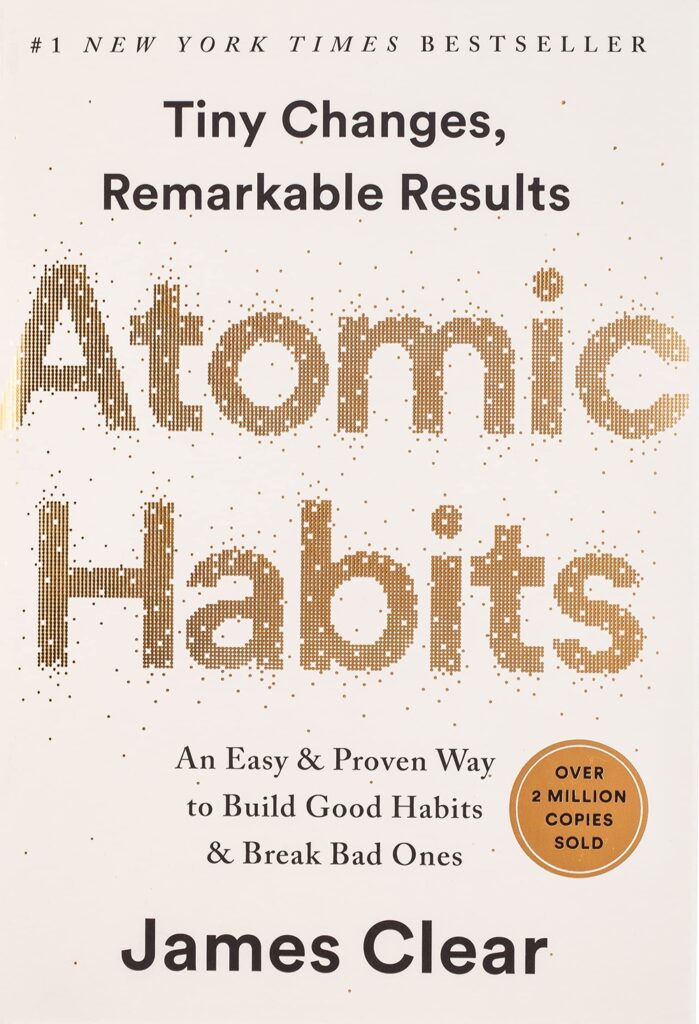Sharing my learnings from the book, Atomic Habits by James Clear
Atomic Habits by James Clear
James Clear, one of the world’s leading experts on habit formation, is known for his ability to distill complex topics into simple behaviors that can be easily applied to daily life and work. Here, he draws on the most proven ideas from biology, psychology, and neuroscience to create an easy-to-understand guide for making good habits inevitable and bad habits impossible.
Along the way, readers will be inspired and entertained with true stories about Olympic gold medalists, award-winning artists, business leaders, life-saving physicians, and star comedians who have used the science of small habits to master their craft and vault to the top of their field.
Atomic Habits will reshape the way you think about progress and success and give you the tools and strategies you need to transform your habits—whether you are a team looking to win a championship, an organization hoping to redefine an industry, or simply an individual who wishes to quit smoking, lose weight, reduce stress, and achieve success that lasts.

- The easiest way to make positive change is to cultivate the right habits.
- we don’t notice tiny changes, because their immediate impact is negligible. But if we repeat small behavior day after day, our choices compound into major results
- If you want to make a positive change in your life, you should recognize that change requires patience, as well as confidence that your habits are keeping you on the right trajectory (even if you’re not seeing immediate results)
- Habits are automated behaviors that we’ve learned from experience.
- Habits begin with a cue, or a trigger to act. Next comes a craving for a change in state. Then comes our response or action. The final step in the process and the end goal of every habit, is the reward.
- Building or changing habits requires hard-to-miss cues and a plan of action.
- One way is to change your surroundings and general environment to encourage better habits.
- use implementation intentions which introduces a clear plan of action, setting out when and where you’ll carry out the habit you’d like to cultivate.
- Making habits attractive will help you stick to them.
- The human brain releases dopamine, a hormone that makes us feel good, when we do pleasurable things. But we also get a hit of feel-good dopamine when we simply anticipate those pleasurable activities. It’s the brain’s way of driving us onwards and encouraging us to actually do things. So, in the brain’s reward system, desiring something is on par with getting something.
- temptation bundling – when you take a behavior that you think of as important but unappealing and link it to a behavior that you’re drawn to – one that will generate that motivating dopamine hit.
- soon enough, you may even find those unattractive tasks enjoyable, since you’ll be anticipating a pleasing reward while carrying them out.
- Making behaviors as easy as possible is key to turning them into habits.
- focus on reducing friction. On the other hand, increase friction for bad habits
- making a habit easier in the long term is the two-minute rule, a way to make any activity feel manageable. The principle is that any activity can be distilled into a habit that is doable within 2 minutes. The rule recognizes that simply getting started is the 1st and most important steep toward doing something
- making your habits immediately satisfying is essential to effective behavior change. When you are pursuing habits with a delayed return, try to attach some gratification to them.
- Habit tracking is a simple but effective technique. You can develop a habit tracker, using a simple calendar/diary and crossing off every day that you stick with your chosen behaviors. You’ll find it effective, because habit tracking itself is an attractive and satisfying habit. The anticipation and action of crossing off each day will feel good and keep you motivated.
- Develop a habit contract that imposes negative consequences if you fail to stay on track.
- consider making a commitment to your partner, your best friend or one of your coworkers. If you agree upon a set of consequences for failing to follow through, you’ll be much more likely to stick to your habits.


Leave a Reply